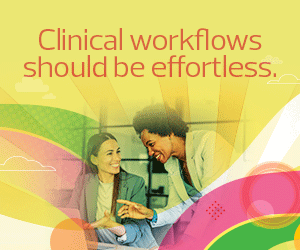Now, as healthcare leaders explore how to further optimize care delivery and create efficiencies, many are targeting clinical workflows. Mobile devices are helping organizations accomplish improved clinical collaboration and gain workflow efficiencies. Mobile phones and tablets can provide many of the capabilities of a traditional workstation on wheels without taking up valuable exam room space. This evolution in mobility has been aided by the platform vendors, who recognize the shift in the industry.
As IT and clinical leaders consider the best ways to navigate today’s healthcare workspaces, it’s important for them to be aware of common challenges, best practices and how a technology partner can help.
How to Overcome Today’s Workspace Challenges in Healthcare
Healthcare organizations often prefer to standardize their workstations, tablets and laptops for management and security purposes. The realities of a hybrid workforce are driving organizations to support more device types across geographies while retaining an on-premises experience. This can be challenging due to the limitations of platforms and prescriptive hardware and software requirements. Healthcare customers can overcome this challenge with the assistance of a technology partner such as CDW. Mobile device management or unified endpoint management solutions play a key role in a modern workspace strategy.
UEM solutions allow you to manage all aspects of the operating system and installed applications, regardless of hardware. UEM is an evolution of mobile device management that goes beyond operating systems and devices, enabling healthcare organizations to use the same platform to manage laptops and other mobile devices, including BYOD. In this way, a healthcare organization can manage the end-user experiences of a physician on the golf course or a physician on rounds in the hospital.
Deploying a UEM platform such as Microsoft Intune helps organizations manage a wide variety of devices no matter where they are and helps them do so securely and at a lower cost.














